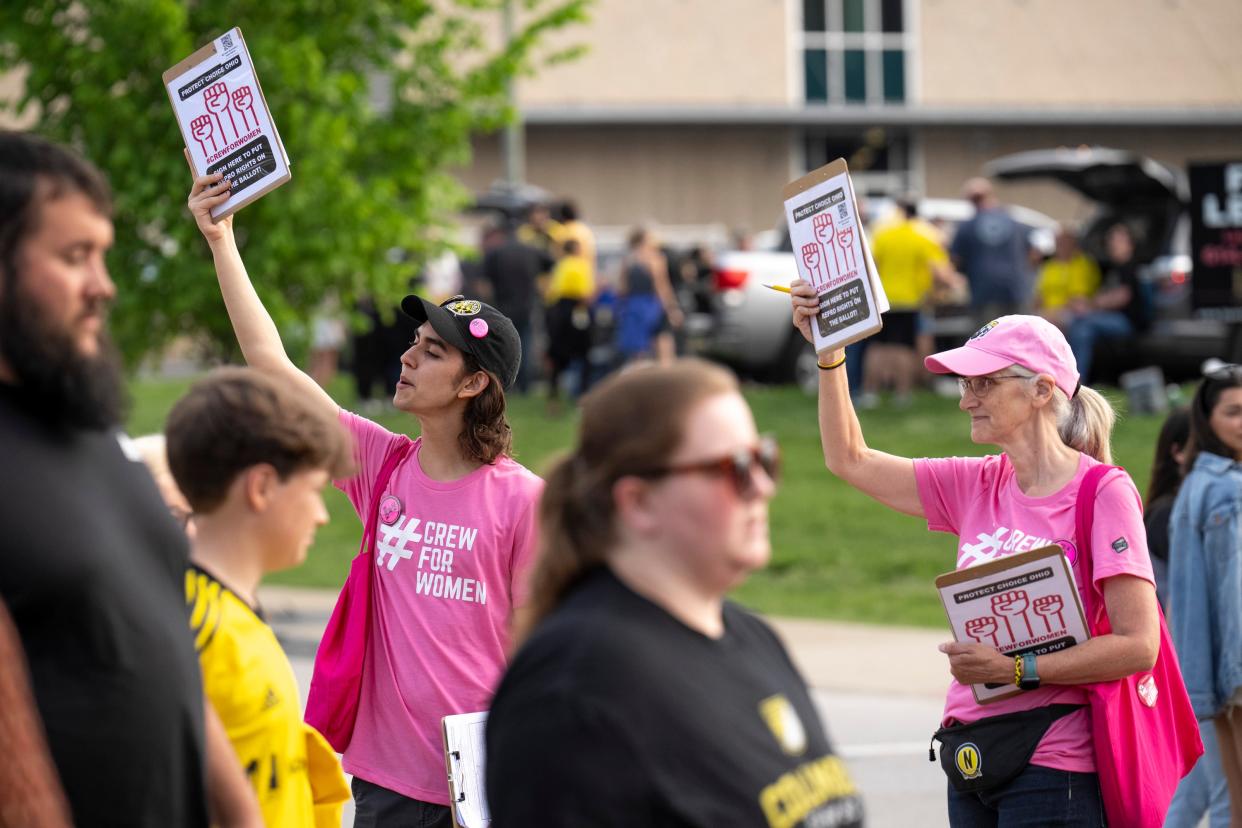Ohio to vote on abortion rights constitutional amendment this November

It's official: Ohioans will vote on abortion access this November.
A proposed amendment to enshrine abortion protections in the state constitution submitted enough valid signatures to make the November ballot, the Ohio Secretary of State's Office announced Tuesday. That means Ohio will be the only state in the nation voting on reproductive rights this year.
The measure officially submitted 495,938 valid signatures and cleared the required threshold in 55 counties, a validation rate of 69.7%. The constitutional amendment was required to submit 413,487 signatures, or 10% of the last governor's race vote, from 44 counties to make the ballot.
Backers of the measure submitted more than 700,000 signatures earlier this month. Over the past several weeks, local boards of elections officials checked those signatures, tossing duplicates and ones from people who were not registered to vote.
What would the amendment do?
The proposed amendment would ensure Ohioans have a right to make their own reproductive decisions, including contraception, fertility treatment, continuing a pregnancy, miscarriage treatment and abortion.
The state could restrict access after viability, which is when the patient's treating physician determines the fetus has a significant likelihood of survival outside of the uterus with reasonable measures. Abortions could be performed after that point to save the pregnant woman's life or health, according to the petition language.
Proponents say this language is needed to protect abortion access after the U.S. Supreme Court overturned Roe v. Wade last year.
In the months that followed that ruling, an abortion ban took effect in Ohio that prohibited doctors from performing abortions after cardiac activity was detected, which is about six weeks gestation. That law is now on hold temporarily, and abortion is legal in the state until 21 weeks and six days gestation.
“Every person deserves respect, dignity, and the right to make reproductive health care decisions, including those related to their own pregnancy, miscarriage care, and abortion free from government interference,” Ohioans United for Reproductive Rights' Lauren Blauvelt and Dr. Lauren Beene said in a statement.
Opponents say this measure goes too far, effectively eliminating any abortion limits in the state.
“Ohioans are waking up to the dangers of the ACLU’s anti-parent amendment and they are terrified – and rightfully so," said Amy Natoce, spokeswoman for Protect Women Ohio, which opposes the measure.
A recent Suffolk University/USA TODAY Network poll found 57.6% of likely Ohio voters support the proposed reproductive rights amendment; 32.4% oppose it and 10% were undecided.
Ohio Right to Life President Mike Gonidakis contends the measure actually lacks support among Ohioans, who "are smart enough to know how dangerous this amendment is."
"In a state of 11.9 million people, they couldn’t even get half a million signatures to advance their agenda. That speaks volumes to the lack of support they have statewide."
What happens next?
Now, the five-member Ohio Ballot Board must approve ballot language for November.
Ohio Secretary of State Frank LaRose, a Republican running for U.S. Senate, serves as the board's chairman. He has opposed the abortion measure and championed Issue 1 on the August to make it harder to amend the state constitution.
"This is 100% about keeping a radical pro-abortion amendment out of our constitution," LaRose told attendees at a Lincoln Day dinner in northwest Ohio. "The left wants to jam it in there this coming November."
The results of the Aug. 8 election on Issue 1 could determine whether the abortion measure has a shot later this year. Republican lawmakers put the issue before voters, asking them to raise the threshold needed to change the state constitution from a simple majority to 60%.
Ohio Right to Life's CEO Peter Range emphasized the importance of Issue 1 in a news release as soon as the abortion rights measure made the ballot: "It is even more imperative that every pro-life Ohioan votes yes on Issue 1 this August to ensure that our Constitution, our preborn and our families are protected."
Jessie Balmert is a reporter for the USA TODAY Network Ohio Bureau, which serves the Columbus Dispatch, Cincinnati Enquirer, Akron Beacon Journal and 18 other affiliated news organizations across Ohio.
Get more political analysis by listening to the Ohio Politics Explained podcast
This article originally appeared on Cincinnati Enquirer: Ohio abortion rights measure makes the November ballot

